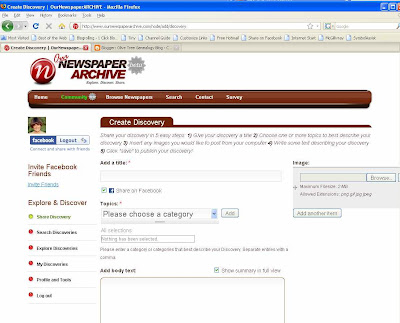Today I spent several hours working on my
NaturalizationRecords.com website. I fixed several broken links on the USA state pages of online Naturalization Records, and added many new links to new Naturalization Records I found online.
The new links I added are:
* Surname Index to Jefferson County, Alabama Naturalization Records, 1887-1911
* Faulkner County Arkansas Declarations of Intent
* White County Arkansas Declarations of Intention
* World War I soldiers who applied for naturalization at Camp Pike, Arkansas
* Index of Declaration of Intention for Citizenship - Douglas County Colorado, 1871 to 1938
* Larimer County Naturalization Index (1885-1958)
* 1917 Enemy Alien Registration Affidavits for Johnson County Kansas , index of affidavits available at the National Archives, includes name, date of birth, city and country of origin, and women's maiden names
Naturalization records at the Johnson County Archives in Olathe, Kansas
* Sedgwick County Kansas Declaration of Intentions 1870 to September 26, 1906
* Name Index to St. Paul, Minnesota, Naturalization Records (1859-1916)
* Missouri Naturalization Records, 1816 - 1955
* Cape Girardeau Petitions, Name index to naturalization petitions ca. 1908-1979, U.S. District Court, Eastern District of Missouri, Southeast Division, Cape Girardeau Missouri,
* Hannibal Petitions, Name index to naturalization petitions ca. 1907-1973, U.S. District Court, Eastern District of Missouri, Northern Division, Hannibal Missouri,
* Jefferson City Petitions, Name index to naturalization petitions ca. 1938-1982, U.S. District Court, Western District of Missouri, Central Division, Jefferson City Missouri,
* Joplin Petitions, Name index to naturalization petitions ca. 1931-ca. 1969, U.S. District Court, Western District of Missouri, Southwest Division, Joplin Missouri,
* Springfield Petitions, Name index to naturalization petitions ca. 1911-ca. 1983, U.S. District Court, Western District of Missouri, Southern Division, Springfield, Missouri,
* St. Joseph Petitions, Name index to naturalization petitions ca. 1908-1976, U.S. District Court, Western District of Missouri, Northern Division, St. Joseph Missouri,
* Lincoln Nebraska Petitions, Name index to naturalizations petitions ca. 1932-1980
* Norfolk Nebraska Petitions, Name index to petitions ca. 1929-1942
* Chadron Division, Name Index to Naturalization Records, Including Declarations and Petitions, U.S. District Court, District of Nebraska, in NARA's Central Plains Region
* Hamilton County Ohio Probate Court Archived Records Search Naturalization Index (1856-1906)
* Shelby County Tennessee Naturalization Records 1856-1906
* Declarations of Intent 1894-1920 Sheridan County, Wyoming
Choose the state you wish to search for ancestor naturalization records by going to the USA Naturalization Records page and using the
clickable USA map.



